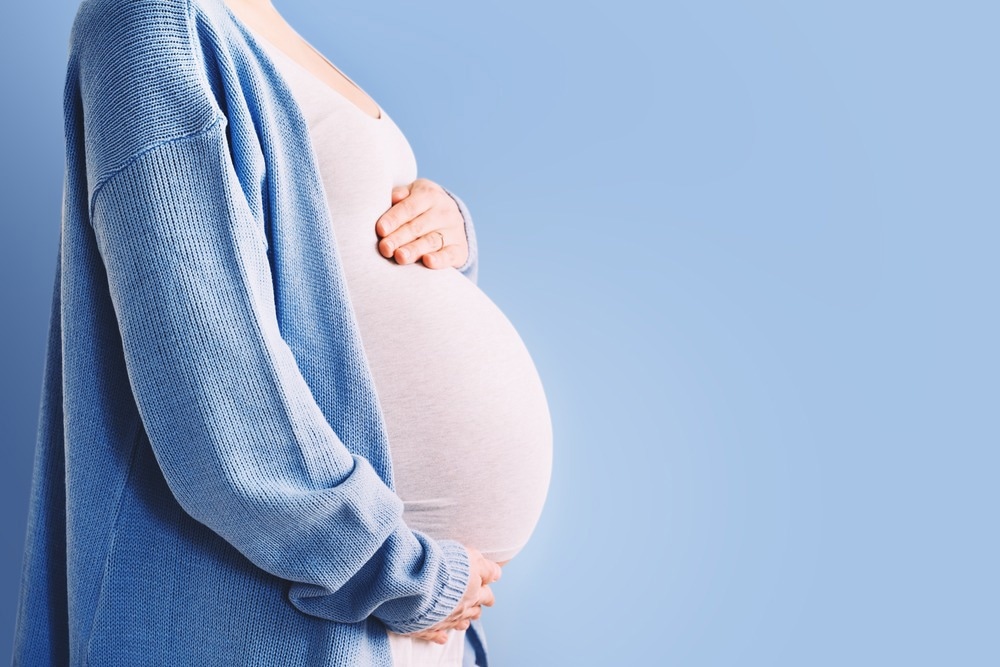 By Neha MathurReviewed by Danielle Ellis, B.Sc.Oct 2 2023
By Neha MathurReviewed by Danielle Ellis, B.Sc.Oct 2 2023In a recent article published in npj Digital Medicine, researchers developed series2signal, a novel, state-of-the-art prediction model that used wearable data from pregnant women to predict gestational age (GA) as a proxy for the progression of pregnancy and the likelihood of poor pregnancy outcomes, especially preterm birth (PTB), based on wearable-detected changes in maternal sleep quality and physical activity (PA) levels.
 Study: Deep representation learning identifies associations between physical activity and sleep patterns during pregnancy and prematurity. Image Credit: Natalia Deriabina/Shutterstock.com
Study: Deep representation learning identifies associations between physical activity and sleep patterns during pregnancy and prematurity. Image Credit: Natalia Deriabina/Shutterstock.com
Technically, series2signal applied time-series classification and regression to each minibatch compatible with any time-series data. It used an extensive posthoc artificial intelligence (AI)-based deep learning (DL) and inferential analysis pipeline that automated downstream tasks to build on this model's hidden representations and associate model output (a robust signal of maternal PA levels and sleep behaviors) with maternal and neonatal health outcomes and clinical parameters.
Background
PTB is a leading cause of child mortality worldwide. Yet, few effective and low-cost interventions to prevent PTB are available.
Maternal physical activity (PA) levels and sleep quality are the two robust modulators of stress and physiological inflammation, which can influence the course of pregnancy and increase the likelihood of prematurity. Data on sleep quality and PA, which reflects maternal stress, is easy and inexpensive to collect via wearable devices but difficult to interpret.
One of the main challenges with integrating wearable data into clinical workflows is analyzing the continuous, lengthy, and low-dimensional data they collect.
Thus, in this study, the researchers developed a novel analytical pipeline that combined prediction(s) from wearable data and comprehensible AI to interpret their predictive model's output. It facilitated uncovering the intricate relationships between all risk behaviors, such as stress and inflammation, that elevated the risk of PTB. Most importantly, this analysis was objective and accurate.
About the study
In the present study, researchers recruited a cohort of 1083 females (aged ≥18 years) from the Washington University School of Medicine and the local community who were planning pregnancy and were willing to wear an actigraphy monitor throughout their pregnancy.
The team asked them to wear actigraphy devices in their first trimester to capture one week of data post-gestational age (GA) indication. They assigned a GA label to downloaded actigraphy data comprising 181,944 hours of data with 2305 data points capturing sleep patterns and PA levels during pregnancy.
Actigraphy data was a two-dimensional (2D) time-series dataset 10,080 in length, set at one-minute periods across one week. Applying a machine learning pipeline to this dataset helped the researchers monitor pregnancy from wearable devices. In other words, AI-based deep learning algorithms of the study model seamlessly recognized dynamic changes occurring during sleep and PA during pregnancy in the large study dataset.
The team used Kruskal-Wallis or chi-squared tests, with a significance level of p<0.001, for statistical analyses.
Results
The median GA was 21 weeks. Certain factors, such as maternal body mass index (BMI), history of preterm birth (PTB), and comorbidities, such as hypertension and diabetes, were more common among patients whose pregnancy resulted in PTB than those who carried to term.
Patients more likely to give preterm birth, i.e., those in the PTB+ group, also had higher chances of C-section, neonatal complications, and death than the PTB- group, with intergroup enrichment of 45.4%, p<0.001.
Series2signal performed significantly better than seven other machine learning methods in predicting GA and reliably predicted the risk of PTB. This data could help identify cost-effective interventions to reduce its likelihood.
When the study model underestimated GA, there were 0.52 fewer PTBs than expected, while GA overestimation increased PTBs 1.44 times. Note that the difference between the predicted and actual GA, ("actigraphy-GA"), was a robust indicator of PTB risk.
Model error was negatively correlated with interdaily stability (Spearman coefficient, P = 0.043), indicating that this model assigned a more advanced GA when females' daily rhythms were less precise. Thus, this model attributed higher importance to sleep periods in predicting higher-than-actual GA relative to lower-than-actual GA.
Conclusions
To date, the combination of LMP and ultrasound remains more accurate than wearables in determining GA. However, a predictive model combining prediction and AI-based interpretability could aid clinicians in precisely identifying when PA and sleep behavior alterations would increase the likelihood of PTB.
Through passive monitoring via wearables, clinicians could recommend changes to exercise habits and sleep, which would help avert poor pregnancy outcomes, including PTB. They could follow the trajectories of pregnant individuals at higher risk of PTB based on wearables-made measurements and series2signal model predictions, an approach that could be particularly beneficial in low- and middle-income countries (LMICs) where it is unfeasible to access biological samples to examine underlying causes of preterm birth.
Even otherwise, it is the need of the hour to study biological and environmental factors contributing to PTB because its incidence is increasing globally, likely due to a lack of medical consultations, continuous monitoring, and timely interventions (when needed) during pregnancy.
So far, the use of wearables, deep learning, and computational model analysis to predict the PTB risk is a proof of concept. Randomized controlled trials (RCTs) are needed to demonstrate the effectiveness of this method to help reduce the incidence of PTB and infant mortality.